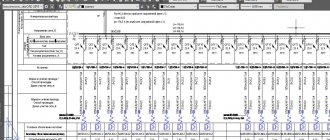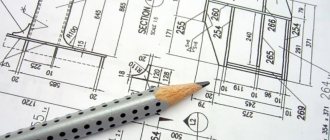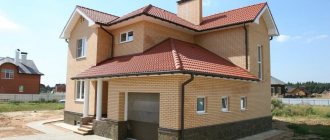The dimensions of an elevator in a residential building are regulated by GOST 5746-83 and GOST 22011-95. The capacity of passenger elevators in residential buildings, with a lifting capacity of 400-650 kg, is often 5-8 people. The corresponding clause determines the height and width of doorways, the dimensions of the cabin, shaft and technical rooms for elevators.
The dimensions of the elevator in a residential building, as well as the number of passenger and freight elevators, are calculated at the design stage. At this stage, the joint work of the architect and the design engineer from the company installing the lifting equipment will ensure that the elevators are properly designed and positioned for maximum passenger comfort and minimum space utilization.
For low-rise buildings, one hydraulic elevator is sufficient. But, given the trends in the modern real estate market, electric high-speed elevators are increasingly being installed. According to accepted standards:
- in buildings from 13 to 45 floors, 3 electric elevators must be installed, with a speed of 106 m/min or 2 with a speed of 150 m/min.
- Buildings above 50 floors must be equipped with two groups of three high-speed elevators.
Conditions that must be met when installing elevators in a residential building
- In 5 minutes the elevator should transport about 6% of residents
- The waiting time should not exceed 1 minute. If the wait is more than 55 seconds, the cabin should descend from the top floor in 45 seconds.
Elevator waiting standards for residential and public buildings are different. In hotels and offices, elevators should move a little faster.
Waiting time by comfort level for passengers:
House
- up to 45 seconds - excellent
- up to 60 seconds - good
- up to 90 sec - satisfactory
- more than 90 seconds - unsatisfactory
Office, administrative or industrial building
- up to 30 seconds - excellent
- up to 45 seconds - good
- up to 60 sec - satisfactory
- more than 60 seconds - unsatisfactory
The number of residents for calculating the lifting capacity and speed of elevators depends on the class of real estate. In economy class houses there are two people per bedroom, in upper segment houses there is one person per two bedrooms. On average, for a 1-room apartment up to 28 m2 - 1 person and 1.5 if this norm is exceeded. For a 2-room apartment - 1.8 people, for a 3-room apartment - 2.5 people, for a 4-room apartment - 3.5 people.
The waiting time for the elevator is calculated by the number of stops, multiplied by the time required for acceleration and braking, and the time required for opening and closing doors, passenger entry and exit, complete descent and ascent of the elevator without stopping is added to the resulting figure. The total time divided by the number of elevators will give the wait time in seconds.
The size of a passenger elevator cabin depends on its load capacity. The cabin height of passenger elevators for residential buildings is often the same - 2200 mm clear.
- The width of a standard doorway is 800 mm
Cabin depth:
- designed for 5 people - 950mm
- for 8 people - 1400 mm, for 13 people - 2100 mm.
The width and depth of the elevator may differ not only in load capacity but also in purpose. Hospital elevators are designed to accommodate a hospital gurney and accompanying persons.
Elevator in the apartment
Luxury real estate implies an increased level of comfort, including in the vertical movement of residents. In short, an individual elevator is increasingly appearing in apartments with two or more levels. An apartment elevator can have different sizes, depending on the wishes and capabilities of the customer. The most common option is an apartment elevator, which has minimal dimensions and a load capacity designed for two adults. But, since this is equipment for personal use, its design can be individual, tailored to the individual needs of a specific customer. You can choose from standard sizes and shapes offered by manufacturers, or assemble an elevator according to a special project. The main thing in this case is that the equipment has the appropriate certificates and operating permits.
The growing population of large cities has led to an urgent need to increase the number of floors in buildings. The operation of elevators in residential buildings made it possible to build high-rise buildings.
The first passenger elevator in Russia appeared in 1795. Kulibin Ivan Petrovich invented the design of a screw lift for the Winter Palace. In the sixties of the 19th century, a steam-powered lifting mechanism appeared and was replaced by a hydraulic one. The first electric elevator appeared in 1880, it was produced by a German company, and the rules for applying national standards of the Russian Federation are GOST R 1.0-2004 “Standardization in the Russian Federation. Basic provisions" Information about the standard
1 PREPARED BY Shcherbinsky Elevator Construction OJSC based on an authentic translation of the standard specified in paragraph 4
2 INTRODUCED by the Technical Committee for Standardization TC 209 “Elevators, escalators, passenger conveyors and lifting platforms for the disabled”
3 APPROVED AND ENTERED INTO EFFECT by Order of the Federal Agency for Technical Regulation and Metrology dated February 11, 2010 N 15-st
4 This standard is modified from the international standard ISO 4190-1:1999 “Elevator installation. Part 1. Lifts of classes I, II, III and IV" (ISO 4190-1:1999 Lift (Elevator) installation - Part 1: Class I, II, III and IV lifts). At the same time, additional requirements and parameters included in the text of the standard to take into account the needs of the national economy of the Russian Federation are highlighted in italics in the text of the standard. This standard is supplemented by the structural element “Bibliography”. The name of this standard has been changed relative to the name of the specified international standard to bring it into compliance with GOST R 1.5-2004 (clause 3.5)
5 INTRODUCED FOR THE FIRST TIME Information about changes to this standard is published in the annually published information index “National Standards”, and the text of changes and amendments is published in the monthly published information index “National Standards”. In case of revision (replacement) or cancellation of this standard, the corresponding notice will be published in the monthly published information index “National Standards”. Relevant information, notifications and texts are also posted in the public information system - on the official website of the Federal Agency for Technical Regulation and Metrology on the Internet
Brick cladding according to GOST 530-2007.
The weight of one brick is 2 kg. The masonry is carried out in half a brick. For 1 m2 of cladding, taking into account mortar joints, you will need 51 bricks. The weight of one square meter of cladding is 102 + 20 = 122 kg.
The total weight of all facing bricks excluding doors and windows is 170 m2 x 122 = 20,000 kg.
Approximate weight of frame houses of different sizes
In order to correctly calculate the foundation for a future private residential building, it is first recommended to calculate the mass (load) of the structure itself along with the roof.
In order not to derive complex formulas, in all examples a pitched roof with a slight slope and the maximum values of the specific masses of structural elements indicated above are provided.
Building weight 6x6
Let's calculate how much a small 6x6 country frame house weighs with the following parameters:
- The walls of the building are of the same dimensions - length 6 m, height 3 m (50 kg/m2);
- Attic floor – 6x6 m (100 kg/m2);
- As a roofing covering, roofing material is used - 6x6 m (50 kg/m2).
Calculation:
- The mass of one wall will be: 6 * 3 = 18 m2 * 50 kg = 900 kg, four walls - 3600 kg;
- Weight of the attic floor: 6 * 6 = 36 m2 * 100 kg = 3600 kg;
- Roof weight: 6 * 6 = 36 m2 * 50 kg = 1800 kg;
- The total weight of a frame residential building measuring 6x6 meters: 3600 + 3600 + 1800 = 9000 kg + 15% = 10350 kg ≈ 10.4 tons.
Building weight 6x8
Let's calculate the weight of a country frame house measuring 6x8 with the following parameters:
- Two walls of the structure - length 6 m, height 3 m (50 kg/m2);
- Two walls of the structure - length 8 m, height 3 m (50 kg/m2);
- Attic floor – 6x8 m (100 kg/m2);
- Sheet metal roofing – 6x8 m (30 kg/m2).
Calculation of the weight of a frame house:
- Mass of the first two walls: 6 * 3 = 18 m2 * 50 kg = 900 kg * 2 = 1800 kg;
- Mass of the second two walls: 8 * 3 = 24 m2 * 50 kg = 1200 kg * 2 = 2400 kg;
- Total mass of walls: 1800 + 2400 = 4200 kg;
- Weight of the attic floor: 6 * 8 = 48 m2 * 100 kg = 4800 kg;
- Roof weight: 6 * 8 = 48 m2 * 30 kg = 1440 kg;
- The total weight of such a structure will be: 4200 + 4800 + 1440 = 10440 kg + 15% = 12006 kg ≈ 12 tons.
Building weight 8x8
Let's calculate the weight of a private frame house measuring 8x8 with the following parameters:
- The walls of the structure are the same dimensions - length 8 m, height 3 m (50 kg/m2);
- Attic floor – 8x8 m (100 kg/m2);
- Slate roof – 8x8 m (40 kg/m2).
Calculation:
- The mass of one wall will be: 8 * 3 = 24 m2 * 50 kg = 1200 kg, four walls - 4800 kg;
- Weight of the attic floor: 8 * 8 = 64 m2 * 100 kg = 6400 kg;
- Roof weight: 8 * 8 = 64 m2 * 40 kg = 2560 kg;
- Total weight of the frame house: 4800 + 6400 + 2560 = 13760 kg + 15% = 15824 kg ≈ 15.8 tons.
Building weight 10x10
Let's calculate the mass of a residential building with a frame structure measuring 10 by 10 meters with the following parameters:
- All walls of the building are the same - length 10 m, height 3 m (50 kg/m2);
- Attic floor – 10x10 m (100 kg/m2);
- Tile roofing – 10x10 m (80 kg/m2).
Calculation:
- The mass of one wall will be: 10 * 3 = 30 m2 * 50 kg = 1500 kg, four walls - 6000 kg;
- Weight of the attic floor: 10 * 10 = 100 m2 * 100 kg = 10000 kg;
- Roof mass: 10 * 10 = 100 m2 * 80 kg = 8000 kg;
- The total weight of a country frame house measuring 10x10 will be: 6000 + 10000 + 8000 = 24000 kg + 15% = 27600 kg ≈ 27.6 tons.
Calculation of the foundation for a frame country house
When performing calculations of the foundation for private frame houses, the type of foundation is taken into account first of all. For example, the method for calculating a pile foundation will differ from the method for calculating a column-type foundation. At the same time, the overall estimate for the construction of a residential building using different foundations will differ significantly.
As a rule, deep concrete strip foundations are most often installed for heavy brick and reinforced concrete buildings. For a light frame-type wooden house, a conventional columnar foundation is sufficient. In this case, even if the walls of the building are quite thick, the construction estimate will not increase significantly.
Basement ceiling
Most often it is made from SIP panels with a thickness of 224 and a width of 625 mm, which ensures the required rigidity of the floor.
To more accurately calculate the weight of the ceiling, you need to take into account the density of the internal frame - after all, the density of the panel itself is much less than that of wood. From the SIP-224 specifications for the selected projects, it is clear that pieces with a width of 625 and lengths of 2800, 2500, 1400 and 1250 are most often used. The average size of a piece for several projects turned out to be 2031x625
, its area is
1,269 sq.m.
Floor weight includes (1) OSB weight, (2) EPS weight, and (3) wood frame weight. The densities are respectively 650, 15 and 500 kg/sq.m.
For an average piece, weight: 19.8 kg - OSB, 3.2 kg - PPS and 20.6 kg - wooden frame.
It turns out (19.8+3.2+20.6)/1.269= 34.4 kg/sq.m
- load from the basement floor.
A little history
Since the urbanization process is still in the expansion stage, a city center with private buildings is complete nonsense. The population of large cities is increasing from year to year. Therefore, the problem of people's resettlement remains constantly pressing.
Cities cannot expand indefinitely. The seizure of agricultural land for residential areas cannot lead to anything good. And covering significant distances to get to the right place is also not an option for residents of megacities.
Apartment buildings are nothing new. But the building, capable of housing a hundred families in an area that was previously occupied by 2-3 private buildings, has become a kind of lifesaver. After all, if you resettle this number of people into one-story houses, you will need to build up an entire block.
An area with standard nine-story buildings Source 3dvector-pro.ru
Typical projects
Nine-story houses made of blocks according to the standard series II-18-01/09, this is the most common 9-story Khrushchev building in Moscow. The first houses of this type began to be built in 1957–1958. Panel houses of the I-515/9M series were built from 1957 to 1976. By the way, the ceiling height was 2.64 m.
Panel house series I-515/9M
Brick houses were also built. From 1973–1983, very high-quality houses were built using the II-66 standard series. The housing in them had an improved layout and was considered prestigious. There is a version of series II-18-01/09 in brick version II-18-01/09MIK.
Brick house of standard series II-66
After the 70s, a new catalog of construction parts began to operate in the Soviet Union, and with it new projects appeared. Here are the most common series of houses: 1-515/9sh, 1605/9, 11-18/9, 11-49; P-44K, 137.
There are really a lot of projects and it makes no sense to list them all, but you need to know that they had different heights. The exact details can be found in the architecture committee.
Walls and partitions of the 2nd floor
The load from the walls and partitions of the 2nd floor is considered similar to the first. The height of the 2nd floor is 2.5 m. I take the coefficients for converting from the area of the walls to the building area from averaging over real projects:
(37,1+4,7+20,1)/2,38 = 26.1 kg/sq.m
- weight of 1 sq.m. of the outer wall of the 2nd floor.
(31,2+2,6+12,9)/2,0 = 23.4 kg/sq.m
- weight of 1 sq.m of partition of the 2nd floor.
26.1x0.91= 23.8 kg/sq.m
- load from the walls of the 2nd floor per 1 sq.m of building area.
23.4x0.88= 20.6 kg/sq.m
- load from partitions of the 2nd floor per 1 sq.m of construction.
In pursuit of standards and savings
The number of floors in the house was designed purely on economic principles. If the city budget did not allow spending money on expensive elevator equipment, then buildings no higher than five floors were planned. But if the latter was included in the project, then the house was no longer built below nine levels. To get the most out of the building.
Standard nine-story panel house Source hypecrib.com
They did not want to build standard buildings higher than this. Because it became necessary to significantly rework the project, introducing expensive elements into it. Because this was required by safety measures for residents.
When standard designs for high-rise buildings were developed, the maximum of nine floors was observed for a simple reason. Fire trucks of that time had a standard ladder with a reach of 30 meters. Therefore, in case of trouble, rescuers could evacuate people from the top floor.
If the building for any reason exceeds these dimensions, it must be equipped with an additional smoke-free staircase with mandatory passage through open balconies. Therefore, it was forbidden to glaze the latter, as well as to force them with things.
Nine-story building with an external fire escape Source lestnitsygid.ru











